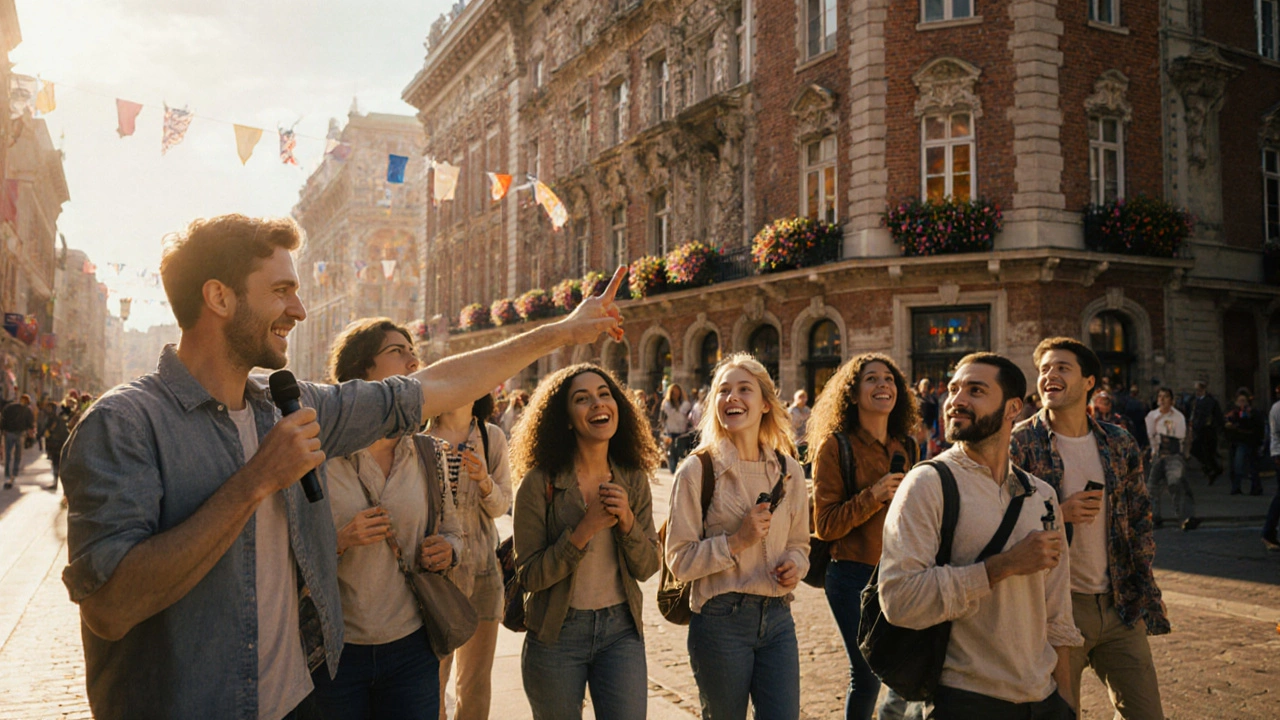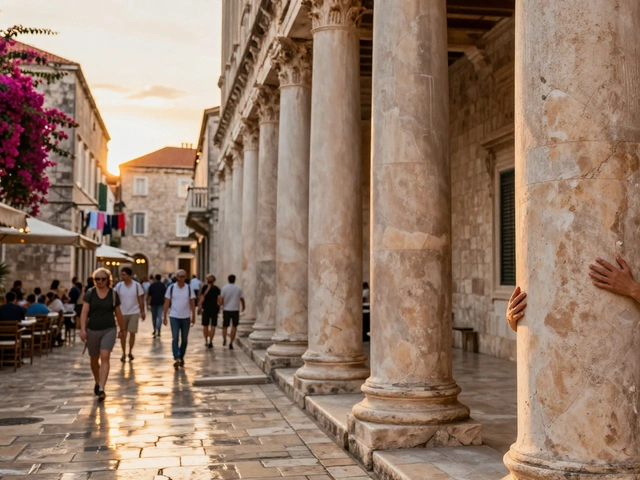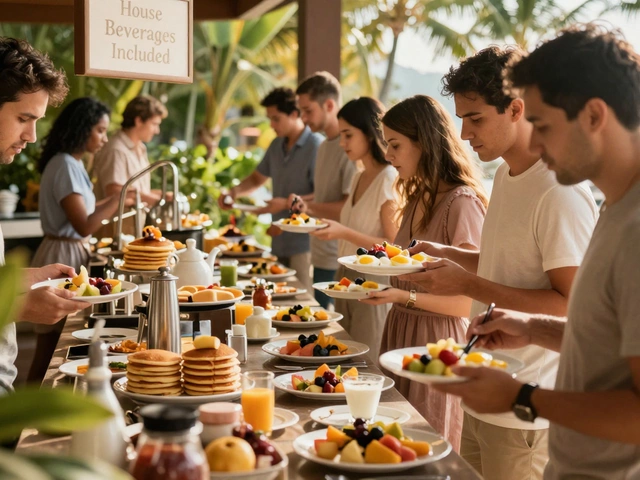Guided Tour vs Self-Guided Travel Calculator
Answer a few questions to find your ideal travel style
This tool helps you determine whether guided tours or self-guided travel is best for your upcoming trip based on your preferences and priorities.
Based on your answers, we recommend:
Why This Works for You
Considerations
People love guided tours for many reasons, but what really makes them click for travelers of all ages? Below we unpack the psychology, the practical perks, and the little tricks that turn a simple walk into a memorable adventure.
What Makes a Guided Tour Tick?
At its core, a Guided tour is a structured travel experience led by a knowledgeable guide who designs the route, shares stories, and handles logistics. The appeal is a mix of convenience, safety, and the human desire to connect with a story. When you hand over the planning to someone else, you free up mental bandwidth for soaking in sights and sounds.
Travelers often say they feel "more alive" on a tour. That feeling stems from two brain chemicals: dopamine, released when you discover something new, and oxytocin, which spikes during social bonding. A well‑run tour delivers both in equal measure.
The Expertise Edge - Why a Tour Guide Matters
Picture standing in front of an ancient ruin with a guide pointing out hidden carvings that most guidebooks miss. That’s the Tour guide a local specialist who blends historical facts with personal anecdotes. Their training often includes certification, language skills, and first‑aid knowledge.
- Historical depth: Guides can explain the why behind a monument’s design, not just the what.
- Local etiquette: Knowing when to bow, when to tip, and what gestures might offend can prevent awkward moments.
- Real‑time answers: Got a sudden curiosity about a street name? The guide can adapt the narrative on the spot.
Such expertise turns a bland walk into a narrative journey, making the destination stick in memory longer.
Cultural Immersion - Going Beyond the Tourist Lens
One of the biggest draws is Cultural immersion the process of experiencing a place through its customs, food, music, and daily life. Guided tours often include stops at markets, family homes, or local festivals that you’d miss on your own.
For example, a food‑focused tour in Marrakech might end with a cooking class in a resident’s kitchen. You leave not just with photos, but with a recipe and a new friend.
Local Expertise - The Secret Sauce of Authenticity
When a guide knows the area like the back of their hand, they can steer you away from tourist traps and toward hidden gems. This Local expertise insider knowledge that highlights lesser‑known sites and stories often includes the best coffee shop, the quiet courtyard where poets once gathered, or the viewpoint favored by locals at sunrise.
Such tips not only enrich your itinerary but also keep you safe, especially in cities where traffic patterns or neighborhood dynamics can be confusing for newcomers.

Travel Safety - Peace of Mind on the Move
Safety is a top concern, especially for solo travelers or families. Travel safety the set of precautions and support mechanisms that protect tourists during a journey is baked into the tour model: guides carry first‑aid kits, know local medical facilities, and monitor group dynamics.
In case of a missed bus or a sudden rainstorm, the guide quickly reorganizes the group, preventing chaos. This reliability is a huge confidence booster for people who might otherwise avoid certain destinations.
Social Interaction - Making Friends on the Road
Humans are wired to bond over shared experiences. Social interaction the natural connection that forms when people engage together in activities on a tour creates instant camaraderie. Whether you’re chatting about your favorite travel apps or sharing a laugh over a mispronounced phrase, these moments often turn strangers into travel buddies.
Many travelers report that the friendships formed on tours become the highlight of their trips, leading to future meet‑ups or even long‑term correspondence.
Cost Savings - Getting More Bang for Your Buck
It may sound counterintuitive, but guided tours can be cheaper than doing everything solo. Group discounts on entry fees, bundled transportation, and inclusive meals lower the overall price. In addition, you avoid hidden costs like expensive taxis or last‑minute museum tickets.
When you factor in the time saved on research, booking, and navigation, the real value becomes even clearer.
Authentic Experiences - The Heartbeat of a Destination
Authenticity isn’t just about seeing the famous landmarks; it’s about feeling the pulse of a place. Guided tours often include activities that let you “live like a local” - whether that’s a sunrise yoga session on a beach, a traditional dance lesson, or a volunteer stint at a community garden.
These moments create stories you’ll retell for years, and they often become the most photographed parts of a trip because they capture genuine emotion rather than staged poses.
Guided Tour vs. Self‑Guided Travel - A Quick Comparison
| Aspect | Guided Tour | Self‑Guided |
|---|---|---|
| Flexibility | Fixed schedule, limited changes | Full control over pace and stops |
| Expertise | Professional guide provides context | Research required; risk of missing info |
| Safety | Guide manages risks, offers assistance | Traveler responsible for own safety |
| Social Interaction | Group bonding, shared experiences | Often solo; may miss connections |
| Cost | All‑in price (transport, entry, meals) | Potentially lower, but hidden expenses add up |
The choice depends on your travel style. If you crave spontaneity, self‑guided might suit you. If you want depth, safety, and companionship, a guided tour is the clear winner.
How to Choose the Right Guided Tour
- Define your goal: Are you after history, food, adventure, or relaxation?
- Check the guide’s credentials: Look for certifications, language fluency, and reviews that mention knowledge depth.
- Read the itinerary: Ensure it includes the sights you care about and allows for free time if desired.
- Consider group size: Smaller groups (5‑12) tend to be more intimate, while larger groups (20‑30) can be more social and cheaper.
- Assess inclusions: Transportation, entry fees, meals, and any special activities should be clearly listed.
- Look for sustainability practices: Eco‑friendly tours respect local communities and often provide richer experiences.
Following this checklist helps you avoid the common pitfall of signing up for a “one‑size‑fits‑all” tour that leaves you bored or over‑packed.
Tips to Get the Most Out of Your Tour
- Ask open‑ended questions - guides love sharing anecdotes.
- Stay engaged but respectful; let the guide lead the narrative.
- Take quick notes or photos of details you want to research later.
- Be flexible with timing - a surprise stop can become the highlight.
- Connect with fellow travelers; exchange contacts for future trips.
Small effort on your part amplifies the benefits and turns an ordinary outing into a lifelong memory.
Checklist: Before You Book a Guided Tour
- Confirm the tour’s start and end times.
- Verify cancellation policy and refunds.
- Check weather forecasts and pack appropriate gear.
- Bring a reusable water bottle and a small snack.
- Download offline maps or translation apps.
Having these basics covered lets you relax and fully enjoy the experience.
Do guided tours work for solo travelers?
Absolutely. Solo travelers often find that guided tours provide safety, social interaction, and a structured itinerary, making the experience less intimidating.
How much does a typical guided tour cost?
Prices vary widely by destination and length, but a day‑long city tour in Europe usually ranges from $50 to $120 per person, inclusive of transport, entry fees, and a meal.
Can I customize a guided tour?
Many operators offer private or semi‑private options where you can adjust the itinerary, add extra stops, or change the pace to suit your preferences.
What should I bring on a guided tour?
Comfortable shoes, a water bottle, sunscreen, a light jacket, any required tickets, and a small notebook for quick notes are essential.
Are guided tours environmentally friendly?
Eco‑conscious operators use low‑impact transportation, limit group sizes, and partner with local conservation projects, making many tours sustainable.






